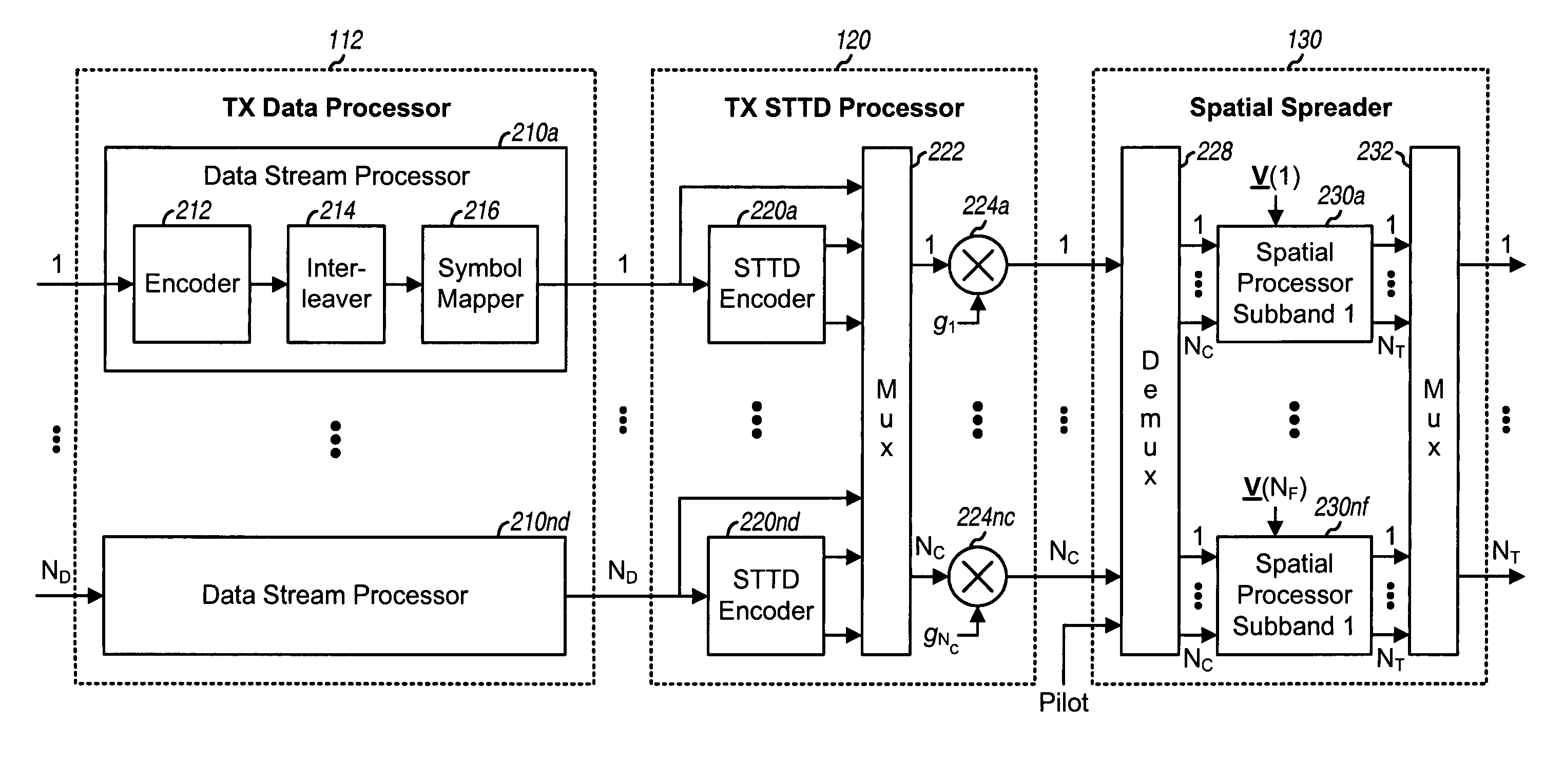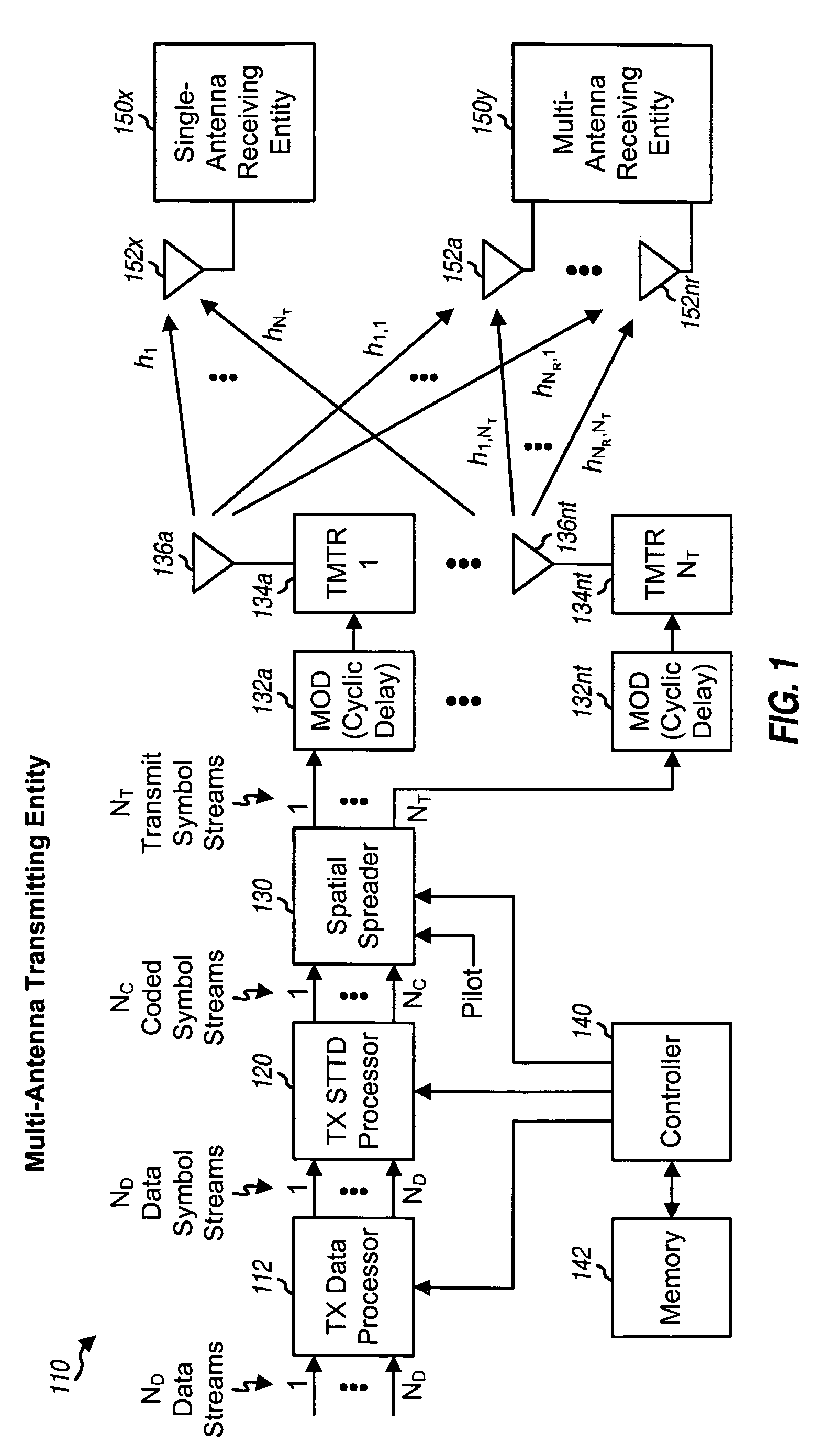Spatial spreading with space-time and space-frequency transmit diversity schemes for a wireless communication system
a wireless communication system and spatial spreading technology, applied in the field of communication, can solve problems such as the difficulty of efficient and reliable transmission of data
- Summary
- Abstract
- Description
- Claims
- Application Information
AI Technical Summary
Benefits of technology
Problems solved by technology
Method used
Image
Examples
Embodiment Construction
The word “exemplary” is used herein to mean “serving as an example, instance, or illustration.” Any embodiment described herein as “exemplary” is not necessarily to be construed as preferred or advantageous over other embodiments.
The transmission techniques described herein may be used for multiple-input single-output (MISO) and multiple-input multiple-output (MIMO) transmissions. A MISO transmission utilizes multiple transmit antennas and a single receive antenna. A MIMO transmission utilizes multiple transmit antennas and multiple receive antennas.
The transmission techniques may be used for single-carrier and multi-carrier communication systems. A multi-carrier system may utilize orthogonal frequency division multiplexing (OFDM), some other multi-carrier modulation scheme, or some other construct. OFDM effectively partitions the overall system bandwidth into multiple (NF) orthogonal frequency subbands, which are also called tones, subcarriers, bins, frequency channels, and so on. ...
PUM
 Login to View More
Login to View More Abstract
Description
Claims
Application Information
 Login to View More
Login to View More - R&D
- Intellectual Property
- Life Sciences
- Materials
- Tech Scout
- Unparalleled Data Quality
- Higher Quality Content
- 60% Fewer Hallucinations
Browse by: Latest US Patents, China's latest patents, Technical Efficacy Thesaurus, Application Domain, Technology Topic, Popular Technical Reports.
© 2025 PatSnap. All rights reserved.Legal|Privacy policy|Modern Slavery Act Transparency Statement|Sitemap|About US| Contact US: help@patsnap.com



